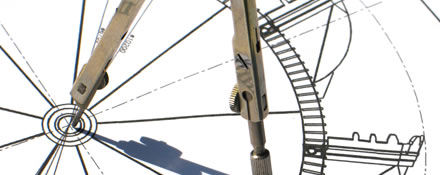
Lesson 3: Stability - Stay Still

Stability in engineering refers to the ability of an object or structure to resist movement. Structures that are unstable have one or more components that can move freely in some direction. This is not always a bad thing. For instance, skyscrapers are built so that they can sway just a bit in heavy winds. The sway is usually dampened so that residents are not alarmed by the movement.
Desired Results
A. Established Goals
NCSCOS Competency Goal 4: The learner will conduct investigations and use appropriate technology to build an understanding of forces and motion in technological design.
B. Understandings
- Students will understand that
- Pushing and pulling forces on a structure or object can change its position and motion.
- An object or structure is stable when the forces acting upon it are balanced by the composition of the object or structure itself.
- Unbalanced forces can cause deformation or collapse of an object or structure.
- Students will know
- That some materials are better than others for constructing a particular object or structure
- The purpose of the object or structure should be considered when choosing materials for construction
- Students will be able to
- Design a solution to a technological problem
- Use models to understand how forces can act on an object or structure
- Make informed choices about building materials
C. Essential Questions
What is the relationship of the materials used to construct an object or structure to the forces that will be acting upon it?
Assessment Evidence
A. Performance Task
Students will design and build an earthquake proof house that takes into account the forces acting upon it and the materials with which it will be built. The house will be tested in a “shake table”. Students will be assessed by the product itself as well as their analysis of the results of the test.
B. Other Evidence
- Data sheets
- Observations
Time required for the activities in this lesson...
- Building Out-45 to 60 minutes
- Skyscrapers-45 to 60 minutes
- Revenge of the Crash Test Dummies-45 to 60 minutes
- Earthquake-Proof Homes-2 sessions of 45-60 minutes
- Building Out
- Skyscrapers
- Revenge of the Crash Test Dummies
- Earthquake-Proof Homes
All activity plan information is available in the "All Lessons Plans" link in the Supplemental Files section of this page

